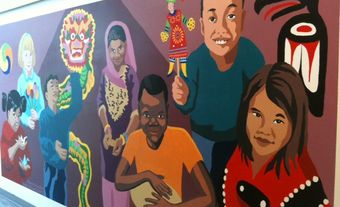The term “visible minority” is used in statistics to designate racialized (non-white) and non-Indigenous people, as defined by Canadian law. This term includes a number of sub-categories based on ethnicity, race or country of origin.
In the 2021 census, around one in four Canadians described themselves as belonging to a community included in the visible minority category.

Origins
The term “visible minority” was coined in 1975 by activist Kay Livingstone in discussing the socio-political inequalities experienced by non-white minorities. (See Racism; Prejudice and Discrimination in Canada.) The designation was officially adopted in 1984 by the Commission on Equality in Employment, which led to the passage of the Employment Equity Act (1986). The primary purpose of this legislation was to facilitate equal access to employment for minorities being discriminated against. The term was formally adopted by Statistics Canada in 1986.
Visible Minority
The “visible minority” category is based on the answers people provided regarding their racial or ethnic identity. This designation includes non-white and non-Indigenous Canadians under twelve sub-categories: South Asian, Chinese, Black, Filipino, Latin American, Arabic, Southeast Asian, West Asian, Korean, Japanese, visible minorities with “multiple” identities, and, in the other choices section, “not included elsewhere.”
Questions regarding visible minority status are found in census and job search questionnaires. Statistical research often examines the differences between visible minorities and the rest of the population, in order to determine the obstacles faced by racialized minorities. With respect to job searches, visible minority status may be claimed to counteract discriminatory recruitment barriers.
Criticisms
There is no consensus regarding the term “visible minority.” Some, such as the United Nations, find it to be too homogenous, as it includes an extremely wide variety of groups. The use of the word “minority” has also been criticized, as it no longer reflects the reality in certain cities or regions where racialized people constitute the majority of the population. (See Markham; Richmond.) The usefulness of the “visible minority” identifier is also fairly limited.
In the 2021 census, Statistics Canada has decided to continue using this term. Aware of the relative shortcomings of its use, the agency is, however, seeking to develop new methods to better represent the diversity of racialized groups.

 Share on Facebook
Share on Facebook Share on X
Share on X Share by Email
Share by Email Share on Google Classroom
Share on Google Classroom



